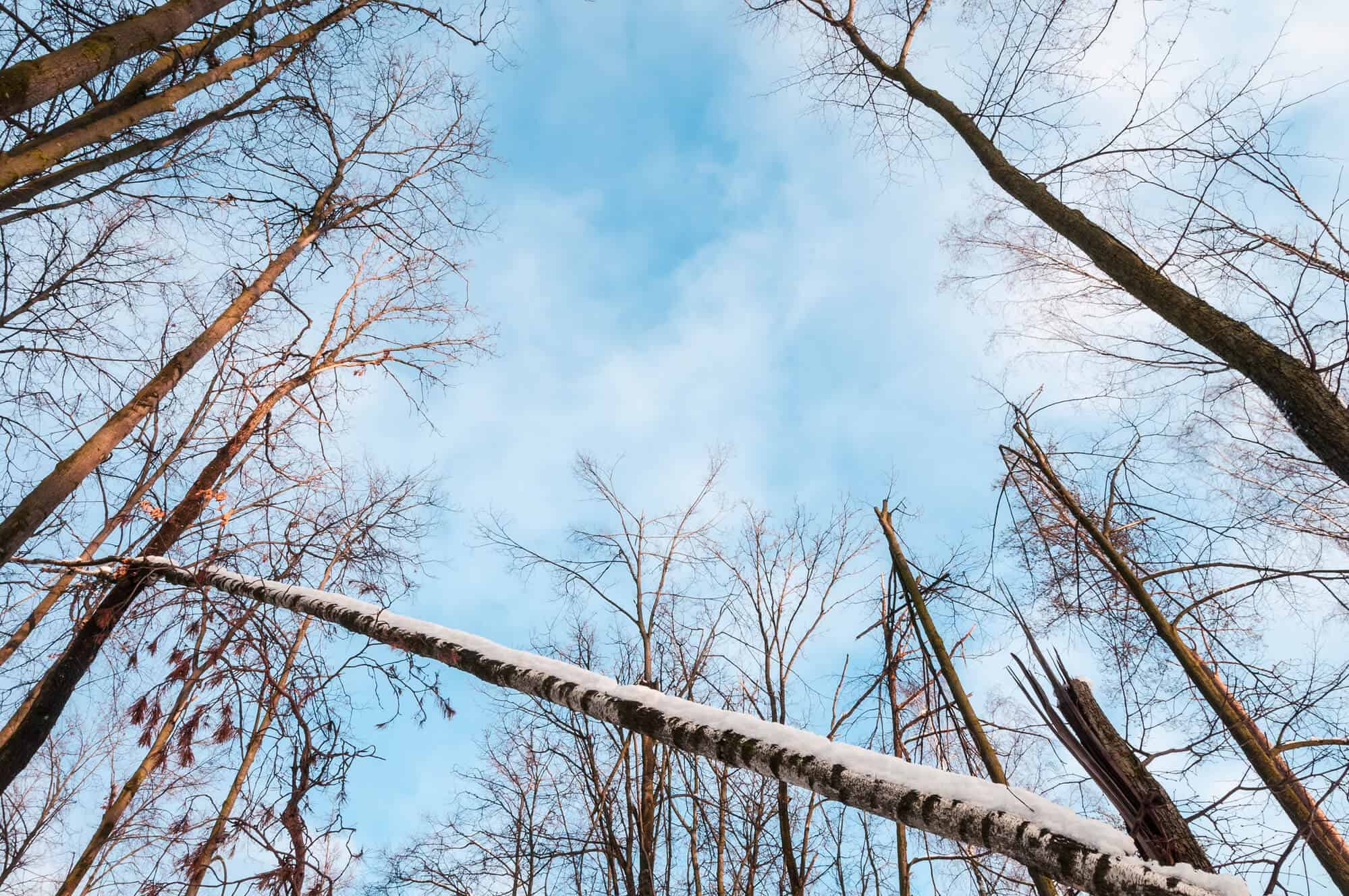Blog
7 causes of winter tree damage

Harsh winter conditions can wreak havoc on your yard. Here are some of the top causes of winter tree damage in Western Canada.
- Temperature fluctuations
Abrupt changes in temperature cause the bark and inner wood of a tree to expand and shrink at different rates. This strain can create long vertical fissures in the trunk known as frost cracks. Irregular freezing patterns can also damage roots and destabilize trees.
Another form of winter tree damage is sunscald. Exposure to warm sunlight triggers the growth of new cells that aren’t equipped to handle freezing overnight temperatures. This leads to discolouration and causes the bark to crack and peel.
- Ice storms
Winter storms characterized by freezing rain and a substantial accumulation of ice glaze put a strain on trees. The excessive weight of ice buildup can break branches, split trunks and uproot entire trees. Young and diseased trees are particularly susceptible to storm damage.
- De-icing salt
Trees can be damaged by salt spray from nearby roads or salt-contaminated soil. An excessive amount of sodium in a tree’s system hinders its ability to absorb nutrients. A buildup of salt in the soil can also affect drainage and reduce moisture.
- Animals
When food is scarce during the winter, wild animals such as rabbits and squirrels are more likely to feed on tree bark and the mulch around the base of your trees. This damages the bark and exposes the tree’s inner wood to the cold, dry air.
- Dry winter winds
Dry winter winds accelerate the evaporation of a tree’s water reserves, and frozen ground prevents the replenishment of moisture through the tree’s roots. This results in a type of dehydration called winter desiccation or winterburn.
- Improper pruning
Winter is an ideal time to prune your trees, so long as you wait until they’re dormant. Pruning trees prior to hibernation stimulates new growth that’s unable to withstand the incoming colder weather.
- Snow cover
Branches and stems can bend and break under the weight of accumulated snow. A tree’s susceptibility to snow damage depends on its shape, density and health. Mature trees often recover in the spring, but saplings may suffer irreparable damage.
Tree care services in Western Canada
Winter damage can weaken trees, stunt their growth and make them more susceptible to disease. At ArborCare, we offer tree consulting, pruning and storm recovery services to help your trees survive and thrive this winter. To schedule an appointment with a professional arborist in Edmonton, Calgary or Kelowna, contact us today.
 1-877-444-8733
1-877-444-8733